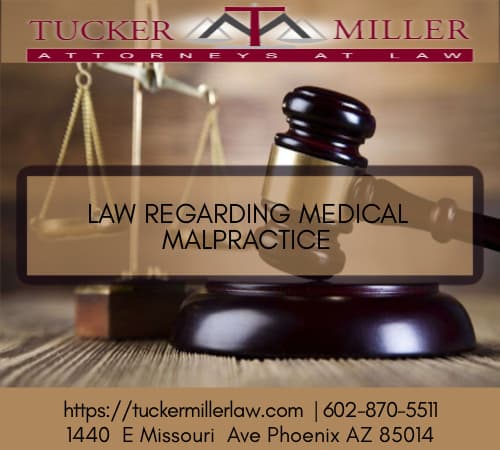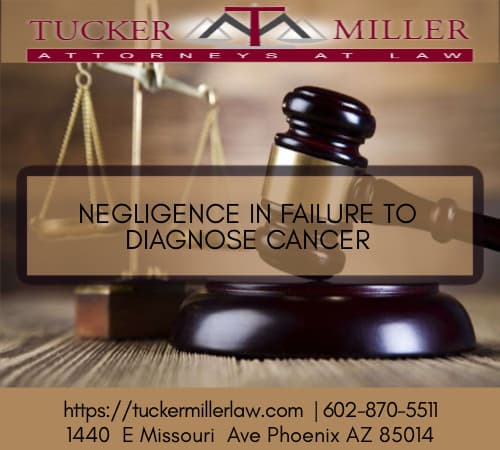Medical Malpractice
MEDICAL MALPRACTICE: FAILURE TO DIAGNOSE CANCER 101
Baker[3] recently reviewed the liability records for more than 8,401 radiologists. They found that 1 in every 2 US radiologists is involved with a medical malpractice case by the time they reach age 60. Recent studies also found that the most common claim underlying malpractice claims is failure to diagnose, with breast cancer being the most common. Particularly for chest radiologists, failure to diagnose lung cancer is the most common allegation.[4] In addition to the diagnostic process, earlier publications and expert commentaries have warned of potential risk management issues surrounding the communication of results and ensuring radiologist-recommended follow-up.[5]
It can be highly devastating to receive the cancer diagnosis of a loved one. Early diagnosis is key to overcoming cancer, as with all illnesses. A patient could face severe consequences if the tumor is not detected early or missed by doctors altogether for a long time. These delays can lead to more invasive treatment, emotional and physical pain, and even death. It is common knowledge that a patient’s survival chances get manifolds better if they are diagnosed early. A delay in diagnosing cancer can lead to a higher likelihood of the tumor spreading to other vital organs, significantly decreasing a patient’s chance of survival.

What Is Failure To Diagnose Cancer? What Are The Causes Behind It?
Failure to diagnose cancer is a legal term[6] that refers to an event in which a doctor fails to recognize and treat cancer in a patient. A failure to diagnose usually means that the patient had visible signs and symptoms of cancer and should have been diagnosed. Failure to diagnose can have mortifying consequences for many patients.
Cancer is becoming more manageable with advances in medicine which especially holds if it is caught early. The prognosis for cancer can be drastically different if it is not diagnosed and treated early.
As has been discussed hereinabove, early diagnosis and treatment are the keys to successful cancer treatment and, in some cases, even cure. Failure to diagnose cancer can lead to patients missing critical times during which treatment is most efficient. A lawsuit is a means to receive compensation for misdiagnosed or undiagnosed cancer patients who suffer from harm due to failure to diagnose.
Medical malpractice is when a doctor fails to diagnose a patient or misdiagnoses a patient. It can be very harmful to fail to diagnose serious illnesses like cancer. Some cancers are treatable at first, but they become more difficult as the disease progresses.
To diagnose patients, doctors rely on the patient’s symptoms. A majority of doctors are qualified to perform differential diagnoses. The doctor will take the patient’s symptoms and make a list of possible diagnoses. They then rank them from most likely to least likely. Failure to diagnose cancer may occur when a doctor does not recognize cancer as a possibility or fails to test for it properly, a sign of medical negligence.
Every case has unique circumstances that give rise to the various possibilities that can lead to a misdiagnosis or failure to diagnose. If the patient’s symptoms or signs are not clear enough to be diagnosed by doctors, that will lead to a claim for failure to diagnose. It is common because doctors often misunderstand the nature of cancer. Unfortunately, many cancers do not show clear signs until the advanced stages. Sometimes, there may not be any symptoms. The term “failure of diagnosis” is commonly used in legal contexts to refer to a doctor’s negligence when diagnosing cancer.

Doctors use early screening methods to detect certain types of cancer. The onus of responsibility lies partly with the patients as well. For example, a patient should always adequately inform a doctor about any lumps or if they can identify whether the lump is cancerous. If the screening tests are not done correctly, then patients may not receive appropriate care.
Sometimes, doctors would not perform specific tests such as biopsies or mammograms because they are too expensive without an indication or information about any lumps from the patient. A failure to create a differential diagnosis or test theories can reduce the likelihood of a doctor finding a cure for the patient. It can also increase the risk that cancer will spread to other parts of the body or require more intensive treatment.
Sometimes proper tests are ordered, but due to negligence of radiologist or pathologist when interpreting the results, it misses the eye. A radiologist might misunderstand an image of a tumor and fail to detect the presence of cancer. Another likely possibility is that a pathologist mishandles a laboratory result and produces the final result showing no signs of cancer.
Rest assured, it is possible to file a claim for medical malpractice in these cases as well.
The aggrieved patients can bring a medical malpractice suit for themselves or their loved one for injuries caused by a failure or delay in diagnosing cancer. The preponderance must prove each element. Your Syracuse lawyer will need to confirm that the details you claim to support your claim are more likely to be accurate than false.
It is necessary to retain an expert in most cases on causation and the accepted standards of care. The defendant side can also choose to request an expert from the other side to reassess the treatment meted out by your doctor. It can be quite a challenge to prove that a doctor incorrectly diagnosed cancer.

Failure To Diagnose Cancer Examples:
These are various examples of cases where the doctor missed cancer during the diagnosis phase:
- A routine mammogram identifies a suspicious lesion in a patient’s breast. However, the doctor does not perform additional testing to confirm if it is, in fact, cancerous.
- A blood test may indicate that a patient has abnormally high levels of protein. Cancerous tumors could cause this. However, the doctor will not investigate the source of the abnormal protein levels.
- One patient describes a series of symptoms that could indicate colorectal carcinoma. The doctor will only recognize a handful of symptoms to diagnose the cause that he sees fit and dismiss the rest, which can constitute the early signs of cancer.
All types of medical malpractice claims, including misdiagnoses and cancer diagnoses, are handled by us, like:
- Failure to diagnose skin cancer.
- Failure to diagnose breast cancer
- Failure to diagnose bone cancer;
- Failure to diagnose bladder cancer;
- Failure to diagnose colorectal carcinoma;
- Failure to diagnose lung cancer.
- Failure to diagnose complications
A proper cancer diagnosis is essential for patients with advanced cancer, which happens when the disease has spread or metastasized. These cases are more challenging to treat. Advanced stages of cancer may require additional treatment options, such as chemotherapy and surgery. Treatment of advanced cancer stages requires a more aggressive approach and can lead to further pain and discomfort for the patient and cause a degradation in the quality of life.

Law Regarding Medical Malpractice:
When a patient claims that an improper medical cane caused bodily harm, it is called a malpractice claim. Medical Malpractice is professional medical negligence when a physician fails to adhere to the accepted standard of care. It means that they breach their duty to the patient.
When negligence is the direct cause of injury, liability can arise. A general type of radiology claim involves errors in the interpretation of radiographs[1], such as misdiagnosis[2] or failure to diagnose. If the image shows a medical problem, misdiagnosis can be ruled as negligent.
The three main types of medical malpractice are claims-misdiagnoses, complications, and miscellaneous. In a study conducted by Dr Mary Hamer and colleagues[3] it was found that misdiagnosis is the most common claim category, with 67% of cases followed by failure to diagnose malignancy, with 30% of cases. These cases included failure to diagnose lung cancers on chest radiographs and to fail to diagnose colon carcinomas using barium enema tests.
The subcategory has a median of $162,000 in compensation. The median payment being $6,500. However, misdiagnosis of fractures or dislocations accounted for only 13%. Complications were the second most frequent claim category at 14% of cases and most often occurred during angiography. Data shows that compensation for complications is high at $217,000 (median). Miscellaneous claims were the third category and included the most common claim: failure to promptly inform a physician of urgent information (9%). Another claim observation is that 82% involved radiologists or radiology departments, and 18% involved non-radiologists responsible for interpreting radiologic studies.
Medical malpractice law aims to ensure patients receive competent care, including an accurate assessment of their health and a plan of action based on their condition. Medical malpractice law provides compensation for patients whom doctors do not give a correct diagnosis.
To bring a valid medical malpractice claim against the hospital for misdiagnosis or failure to diagnose, patients must demonstrate three essential elements that will form the basis of the claim lawsuit:
- At the time of the alleged error, a doctor-patient relationship was in place.
- The doctor’s mistake reached the point of negligence.
- The negligence caused the patient to suffer harm.

Negligence In Failure To Diagnose:
Failure to diagnose lawsuits is defined as the negligence of a physician responsible for diagnosing and treating the patient’s symptoms. Negligence can be defined as the failure to provide proper care and attention when treating a patient. It is when a medical professional does not have sufficient information or resources to diagnose cancer.
Standard Of Care
The court will evaluate the medical professional’s actions against the industry standard to determine if negligence caused the failure to diagnose. The expected standard of care is what each patient should be receiving for their particular illness. Interviewing other doctors with similar experience and qualifications to establish the standard of care is expected to determine it. The doctor could be held responsible for negligence if the doctor’s actions do not conform to the industry’s expectations.
Death From Failure To Diagnose:
The extent of cancer may mean that the patient missed an opportunity to cure it entirely. These cases may result in treatment being administered to alleviate symptoms and improve the patient’s remaining life quality. If the diagnosis of cancer is not made, the patient could die.
Investigation Of Failure To Diagnose:
Patients with cancer whom their primary doctor did not correctly diagnose will often find out about the failure by another doctor. If patients feel their symptoms are not consistent with the doctor’s recommended treatment plan or diagnosis, they should consult another physician immediately. A proper diagnosis may only be possible if the patient takes the initiative to seek another opinion. Patients who feel they have cancer should speak with a lawyer about their legal options.
The aggrieved patient may bring a malpractice case against the doctor if the doctor failed to diagnose their late-stage cancer or have a loved one who died from it.

Possible Liable Parties:
A claim is usually brought against the medical professional who delayed the diagnosis.
- The general practitioner may not have performed a diagnosis or issued a referral.
- A radiologist may not have correctly interpreted the X-rays.
- A surgeon may not have removed a tumor or detected suspicious tissue.
- Manufacturers of defective technology could also be responsible in some cases.

Should My Doctor Have Diagnosed Me Sooner?
Sometimes, a doctor cannot have diagnosed and treated your cancer sooner. However, doctors may not have ordered the proper tests in other instances, even though patients present recognizable symptoms.
Each year, thousands die from cancer-related deaths caused by failing to order the proper tests or misreading those results.
Contact us for more information about the misdiagnosis of cancer claims.
Contact Tucker & Miller to discuss your case regarding misdiagnosis or failure to diagnose. Your first consultation will be free of cost.

Medical-Legal Citations
[1] Harvey, H. B., Tomov, E., Babayan, A., Dwyer, K., Boland, S., Pandharipande, P. V., Choy, G. (2016). Radiology Malpractice Claims in the United States From 2008 to 2012: Characteristics and Implications. Journal of the American College of Radiology, 13(2), 124–130. doi:10.1016/j.jacr.2015.07.013
[2] Agency for Healthcare Research and Quality. Medical Liability Reform and Patient Safety Initiative progress report. Available at: http://www.ahrq. gov/professionals/quality-patient-safety/patient-safety-resources/liability/ medliabrep.html
[3] 6. Baker SR, Whang JS, Luk L, Clarkin KS, Castro A III, Patel R. The demography of medical malpractice suits against radiologists. Radiology 2013;266:539-47.
[4] Whang JS, Baker SR, Patel R, Luk L, Castro A III. The causes of medical malpractice suits against radiologists in the United States. Radiology 2013;266:548-54. See also, Baker SR, Patel RH, Yang L, Lelkes VM, Castro A III. Malpractice suits in chest radiology: an evaluation of the histories of 8265 radiologists. J Thorac Imaging 2013;28:388-91.
[5] Berlin LM. Failure of radiologic communication: an increasing cause of malpractice litigation and harm to patients. Appl Radiol. Available at: http://www.appliedradiology.com/Issues/2010/01/Articles/Failure-of-radiologic-communication%13An-increasing-cause-of-malpractice-litigation-and-harm-to-patients.aspx
[6] Bal, B. Sonny. “An Introduction to Medical Malpractice in the United States.” Clinical Orthopaedics and Related Research. 467.2 (2009): 339-347. Print.
[7] St. Paul Fire and Marine Insurance Company. Study shows causes of claims. ACR Bulletin. Vol. 41. Reston, Va.: American College of Radiology, 1985; 8.
[8] Doubilet P. Herman PG. Interpretation of radiographs. AJR 1981; 137:1055-1058.
[9] Hamer, M. M., Morlock, F., Foley, H. T., & Ros, P. R. (1987). Medical malpractice in diagnostic radiology: claims, compensation, and patient injury. Radiology, 164(1), 263–266. doi:10.1148/radiology.164.1.3588916










